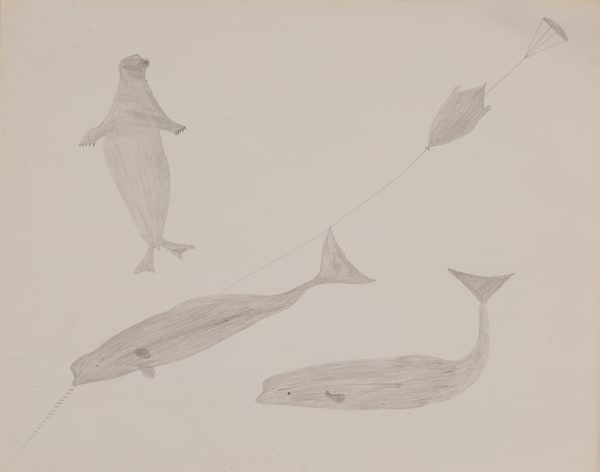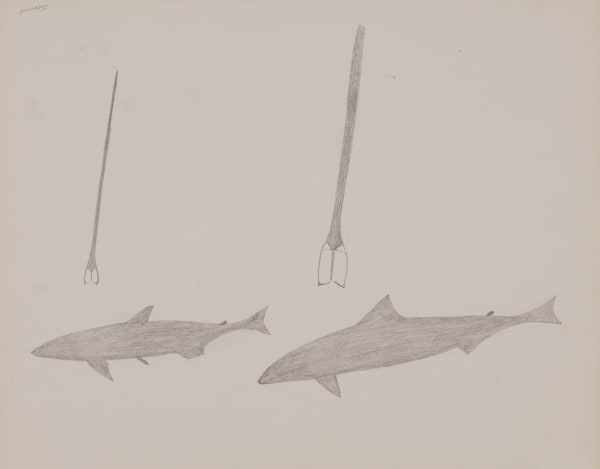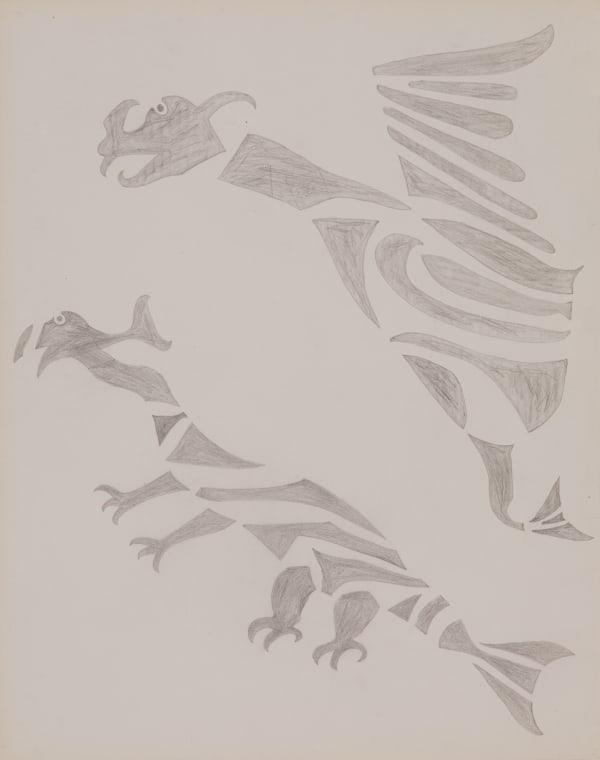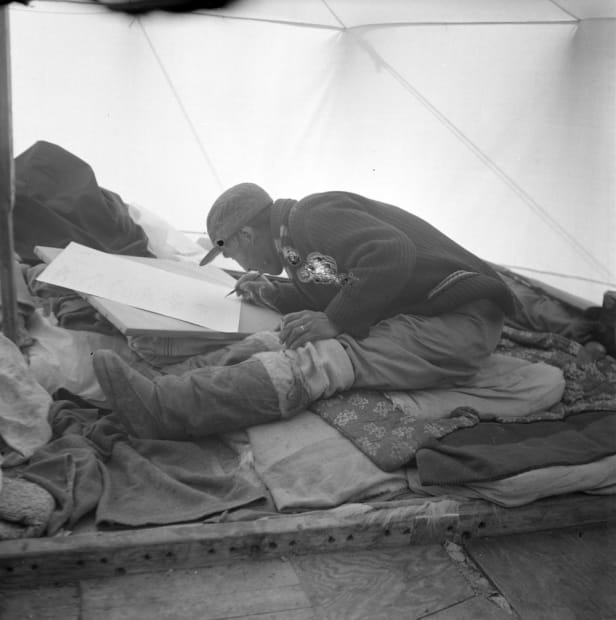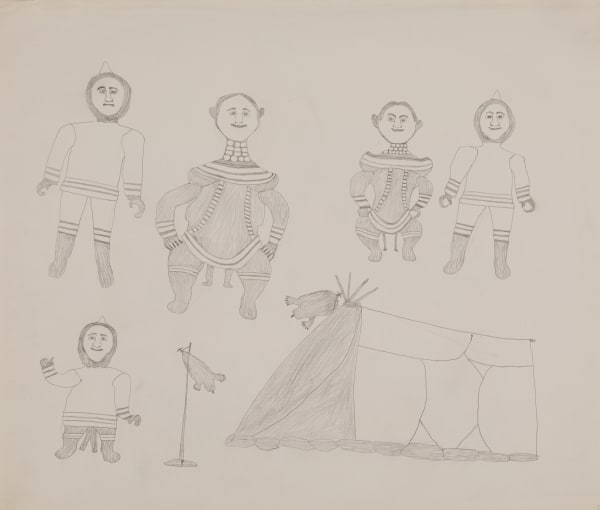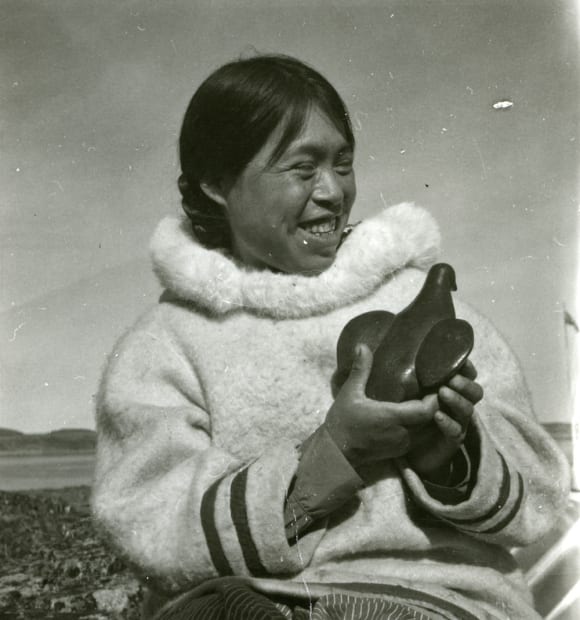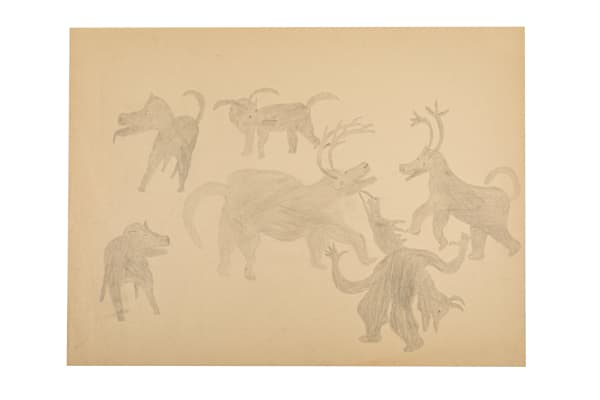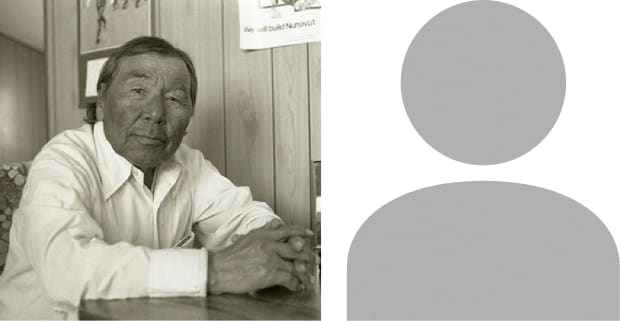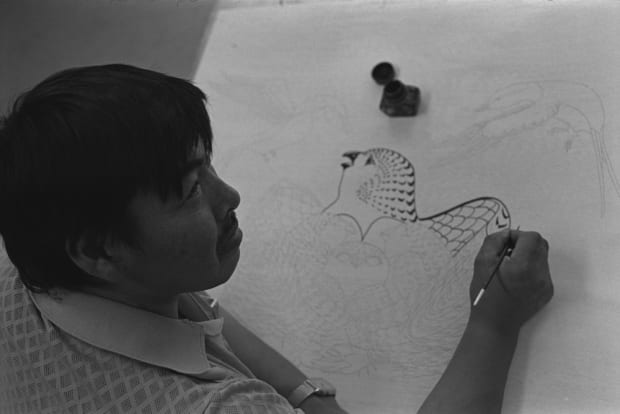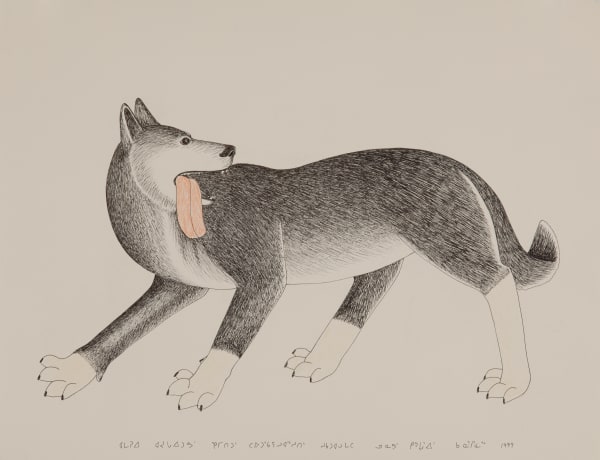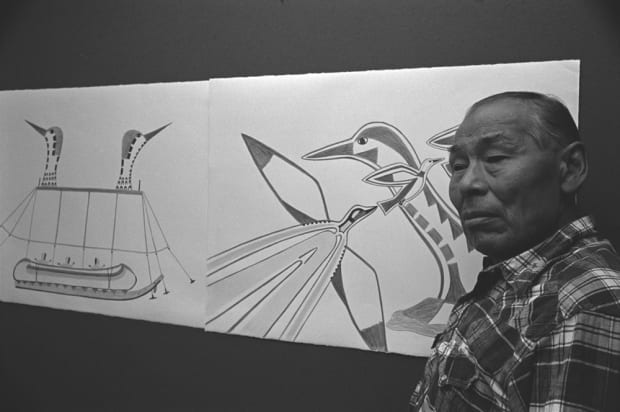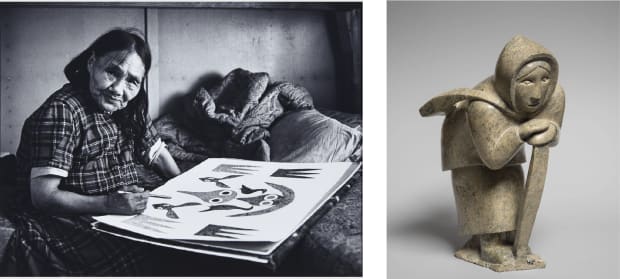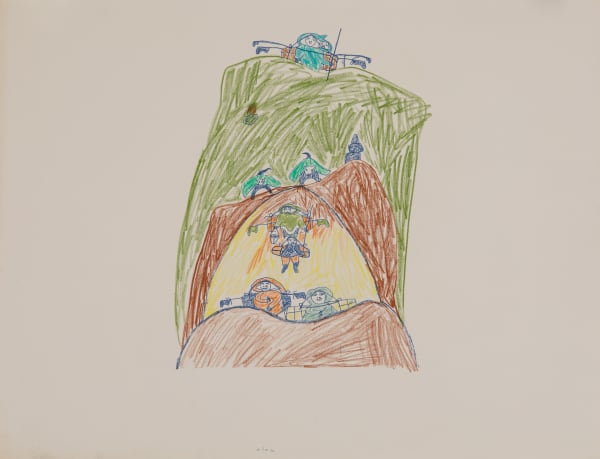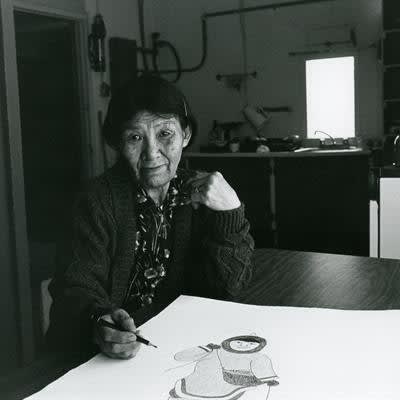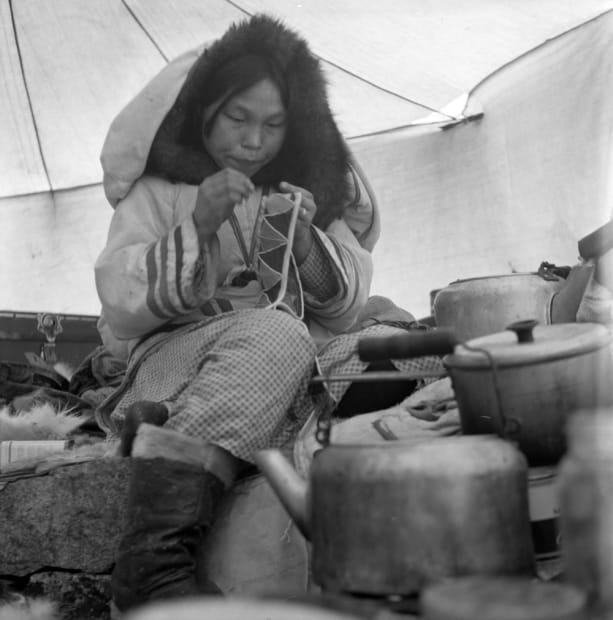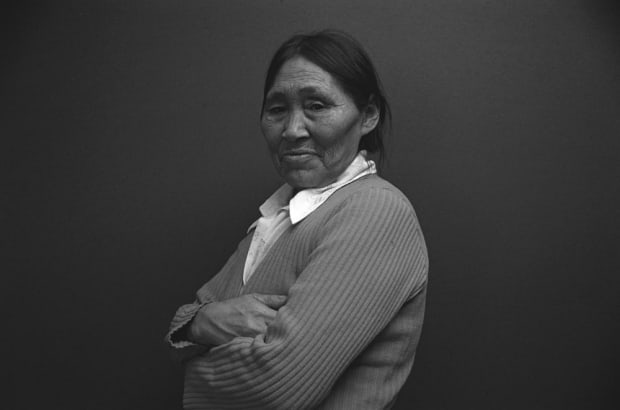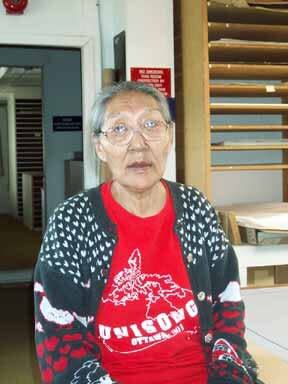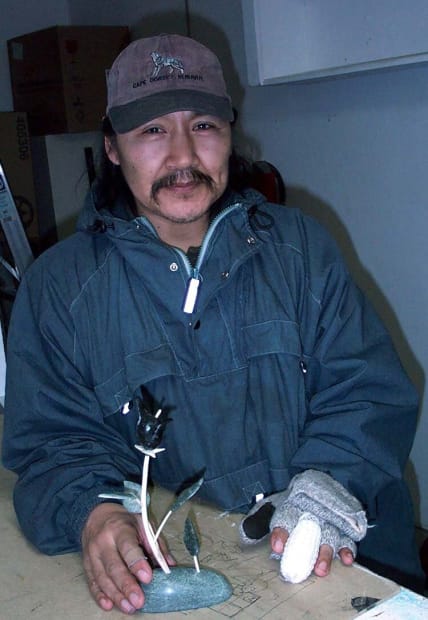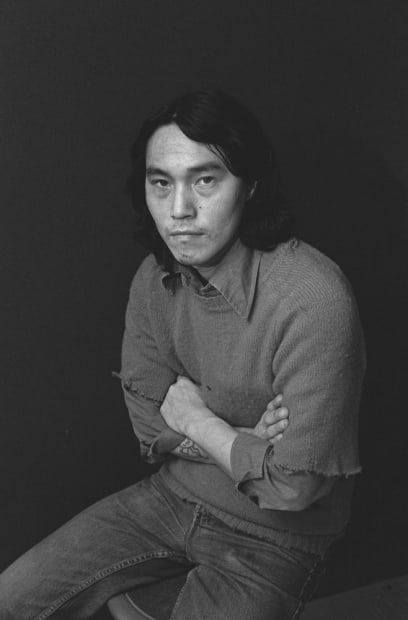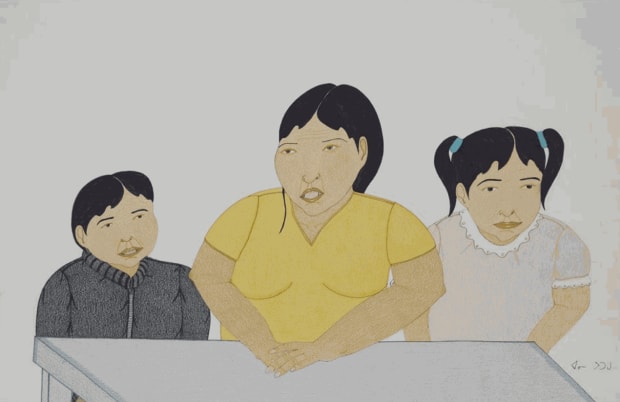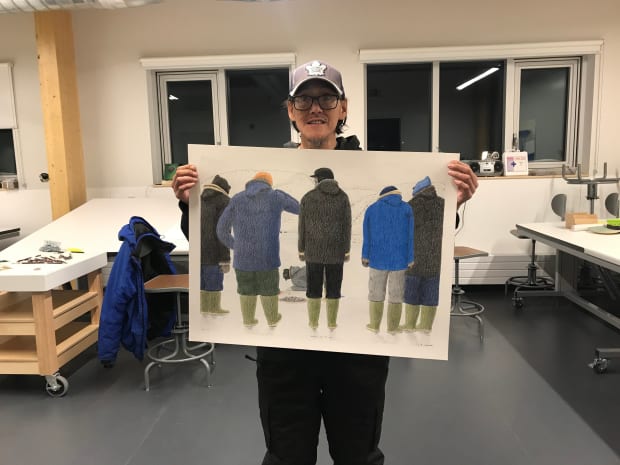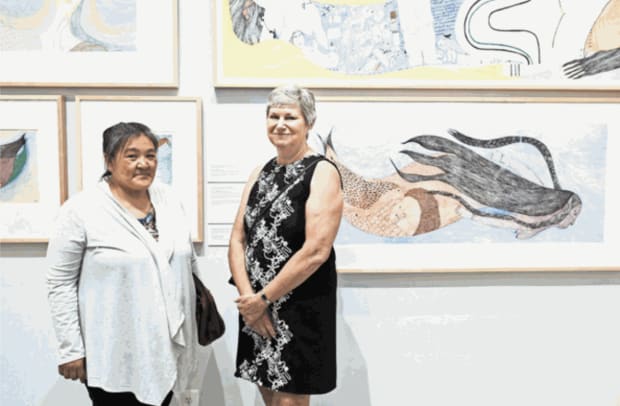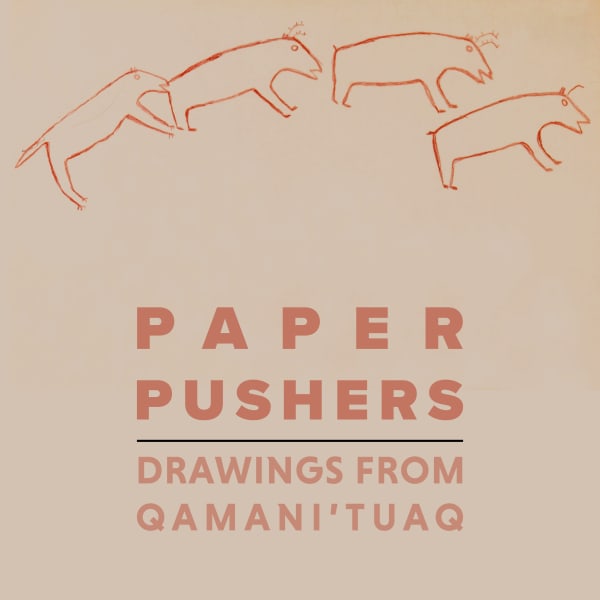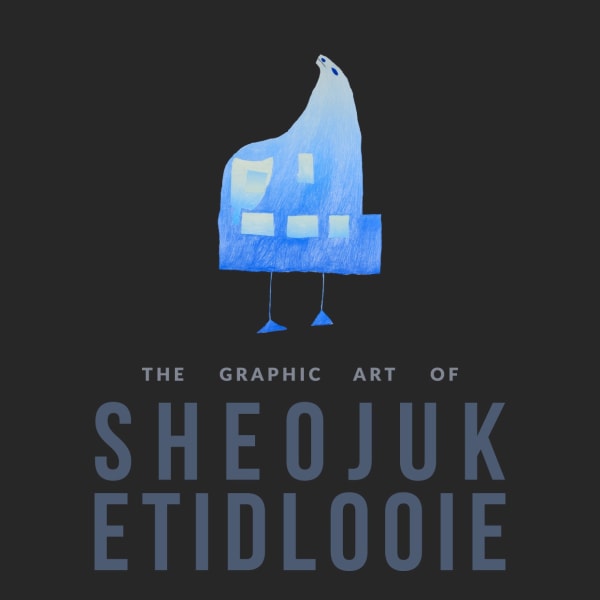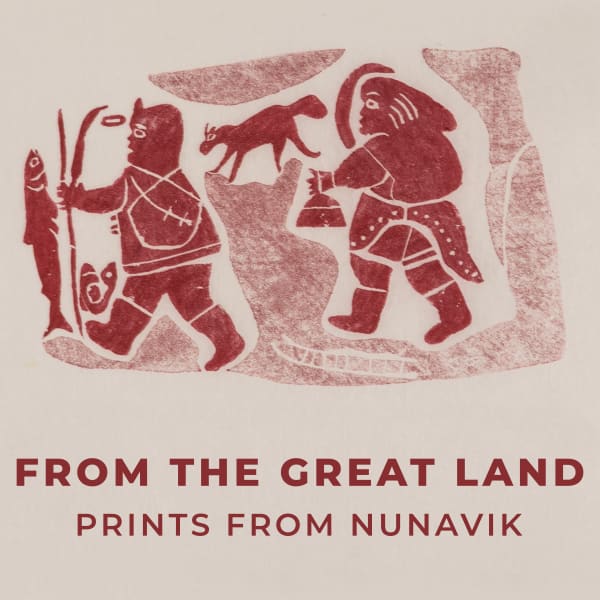Introduction
Since the inception of the printmaking program in the late 1950s, many Inuit living in and around Kinngait (Cape Dorset) became attracted to the newly introduced medium of drawing, encouraged by the West Baffin Eskimo Co-operative. Artists explored a variety of themes, ranging from depictions of traditional hunting and camp life to more unusual scenes of mythological transformation, fantastical figures, shamanism, and even Christianity. A desire to illustrate and celebrate traditional Inuit culture predominates in the first several decades of drawing in Kinngait, with an emphasis on the relationship between humans and animals. Drawings were seldom marketed in the 1960s, and even in the 1970s were largely ignored by southern collectors in favour of the more colourful prints promoted in annual collections. Remarkably, it was not until the late 1980s that these extraordinary, unique expressions, drawn by hand on paper, began to come to the attention of collectors in the south through the efforts of both public and private art galleries.
This group of Kinngait drawings spans the years 1958 to 2008 and charts the course of developments in the medium over this time period. The majority of these works pre-date the extraordinary innovative changes in scale and medium that have taken place since about 2000, yet the roots of “contemporary” Kinngait drawings can already be seen in these lovely early works. Format, scale, medium, and subject matter all evolved greatly over the first 50 years of Kinngait drawing as a result of the Kinngait Studios’ introduction of new means of expression for the talented artists of this community.
Works in this exhibition are subject to prior sale.
All artworks are unframed unless otherwise indicated.
-
Exhibition LOCATION & DATES
LOCATION
DATES
Times
1 William Morgan Drive Friday, February 10 10:00 AM - 5:00 PM Toronto M4H 1N6 Monday, February 13 10:00 AM - 5:00 PM Get Directions or by appointment In addition, our team can provide thorough and comprehensive condition reports and additional images. We welcome your enquiries at info@firstarts.ca or 647-286-5012. The absence of condition does not imply that an item is free from defects, nor does a reference to particular defects imply the absence of any others.
-
THE EARLY DAYS: GRAPHITE DRAWINGS OF THE 1960S
Drawings from the late 1950s and early 1960s primarily focus on traditional mythology, fantastic imagined scenes, or narrative depictions of traditional life. While there is an apparently similar "look" to the drawings of this period due to the use of graphite on paper, some strikingly individual artist styles begin to emerge. -

-
-

-
-

-

-
-
THE RISE OF INDIVIDUAL STYLES AND SUBJECT MATTER
1970-1990Graphite pencils gave way to coloured pencils, crayons, felt-tip pens, and eventually even acrylic paints in this time period. The Kinngait Studios added lithography, a printing medium in which artists were encouraged to create original drawings directly onto the printing matrix, which allowed for a greater artistic freedom of image and colour. Some artists remained interested in traditional imagery while others preferred to highlight aspects of their contemporary life. Individual artists found their own preferred style; Kananginak Pootoogook created realistic animal and bird images, while Pudlo Pudlat drew whimsical juxtapositions of animals and humans with contemporary landscapes filled with telephone wires, airplanes and helicopters. From this time on, Kinngait graphic artists can only be discussed individually as there is no longer a discernable “community style.”
-

-
-

-
-

-

-
-

-

-

-

-
-
New Subjects, New Styles
1990 OnwardFrom the 1990s on, Kinngait artists emerged with fully developed but individual styles and interests, availing themselves of a range of different media. These ranged from concentration on single elements as found in the work of Arnaqu Ashevak, to the lyrical transformations of Qavavau Manumie. -

-

-
-

-

-
-
 AOUDLA PUDLAT (1951-2006) KINNGAIT (CAPE DORSET)
AOUDLA PUDLAT (1951-2006) KINNGAIT (CAPE DORSET)Bird on Nest, 1987/88
coloured pencil and ink on paper, 26 x 20 in (66 x 50.8 cm)
$ 1,000.00 -
 AOUDLA PUDLAT (1951-2006) KINNGAIT (CAPE DORSET)
AOUDLA PUDLAT (1951-2006) KINNGAIT (CAPE DORSET)Bird Protecting Nest, 1987/88
ink and coloured pencil on paper, 20 x 26 in (50.8 x 66 cm)
$ 950.00 -
 AOUDLA PUDLAT (1951-2006) KINNGAIT (CAPE DORSET)
AOUDLA PUDLAT (1951-2006) KINNGAIT (CAPE DORSET)School of Fish, 1994/95
ink and coloured pencil on paper, 20 x 15.5 in (50.8 x 39.4 cm)
-
 AOUDLA PUDLAT (1951-2006) KINNGAIT (CAPE DORSET)
AOUDLA PUDLAT (1951-2006) KINNGAIT (CAPE DORSET)Two Ravens, 1985
coloured pencil and charcoal on paper, 20 x 13 in (50.8 x 33 cm)
-
-

-
-

-

-
-

-

-
-
 TIM PITSIULAK (1967-2016) KINNGAIT (CAPE DORSET)
TIM PITSIULAK (1967-2016) KINNGAIT (CAPE DORSET)Ulu are Made from Handsaw, 2008
coloured pencil and ink on paper, 13.25 x 40 in (33.7 x 101.6 cm)
-
 NINGIUKULU TEEVEE (1963-) KINNGAIT (CAPE DORSET)
NINGIUKULU TEEVEE (1963-) KINNGAIT (CAPE DORSET)Tattooed Sedna Feeding Child, 2004/05
ink on paper, 20 x 26 in (50.8 x 66 cm)
-
 OHOTAQ MIKKIGAK (1936-2014) KINNGAIT (CAPE DORSET)
OHOTAQ MIKKIGAK (1936-2014) KINNGAIT (CAPE DORSET)Three Birds, 2000/01
ink on paper, 19.75 x 26 in (50.2 x 66 cm)
-
-
Related
-

PAPER PUSHERS
DRAWINGS FROM QAMANI’TUAQView Exhibition
-

The Graphic Art of Sheojuk Etidlooie
View Exhibition
-

From the Great Land
Prints from NunavikView Exhibition
-

KENOJUAK ASHEVAK, C.C., R.C.A. (1927-2013) KINNGAIT (CAPE DORSET)
Untitled (Woman with Owls and Flora), c. 1989-1990LOT 110
ESTIMATE: $2,000 — $3,000
PRICE REALIZED: $1,800.00
-



